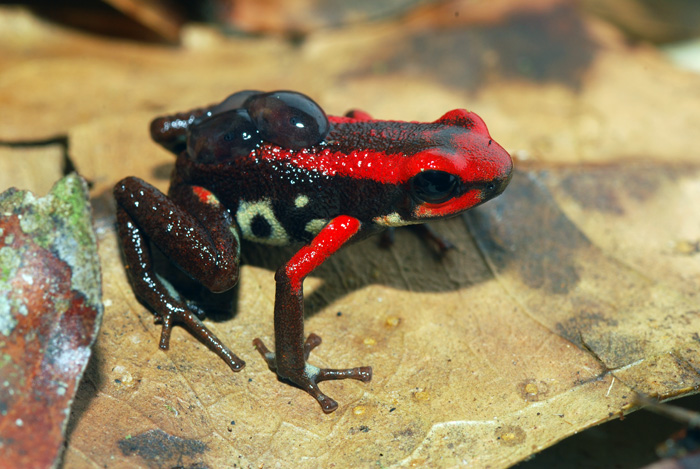Through croaking, their main communication media, frogs recognize their same specie, notice the presence of predators and protect their resources. Moreover, through male croaking, females identify if males are in good physical condition, also, if they are big and own high quality lands, attributes to choose a potential couple.
Taking into account the importance of such sound sings; is it possible that external noises affect these animals" reproduction and survival" The answer is yes, says Professor Carlos Jaramillo, Reserve Forest Bosque de Yotoco director.
This natural scenario has been useful for Fernando Salinas, a PhD student from the biological sciences program in Universidad de los Andes, to study how some frog specimens adjust to the acoustic environments in which they live, and how their croaking characteristics have been affected by anthropic causes.
Field trip
Once the croaking is recorded, variables such as frequency, croaking length, and pulse number are measured through specialized programs for sound analysis. According to Salinas "Frogs that reproduce in ravines do not show evidence to support the hypothesis about the croaking evolution in high frequencies to avoid the noise common water generates" said the researcher.
On the contrary, "many of these species croak in high frequencies because they are small (small animals tend to produce high frequencies), and it does not necessarily mean they do it because they developed this croaking characteristic to avoid the negative effects of ravines" noise in their acoustic communication" says Salinas.
In frogs near artificial noise sources, such as roads, in the case of the Reserve Forest Bosque de Yotoco the road that goes from Buga to Buenabentura, Fernando Salinas" preliminary results suggest an important modification of their behavior.
The researcher proved that Ranitomeya bombetes, a typical specie from the reserve"s ecosystem, croaks during periods of silence when there is no traffic on the road. Situation that indicates the specie implemented behavioral actions for its survival, although it does not necessarily mean an adaptation process.
"Knowing the effects of anthropic noises helps us understand that this specie can lose the ability to reproduce with other individuals of other species, because, even close to a male or female, they would not recognize each other as the same kind", Said the reserve director protected by the UN.
Two conclusions emerge from this research: first, the importance of finding strategies to prevent the extinction of these amphibians. Second, the importance of including them in the environment impact evaluation of important big construction works in the country.
That is why, for Fernando Vargas "the aim is creating, through scientific research, environmental, social and politic consciousness and making that construction projects include some sort of designs and structures to reduce the possible environmental damage that affects species such as macroinvertebrates, small mammals, rodents, amphibians and reptiles.
 Correo Electrónico
Correo Electrónico
 DNINFOA - SIA
DNINFOA - SIA
 Bibliotecas
Bibliotecas
 Convocatorias
Convocatorias
 Identidad UNAL
Identidad UNAL



